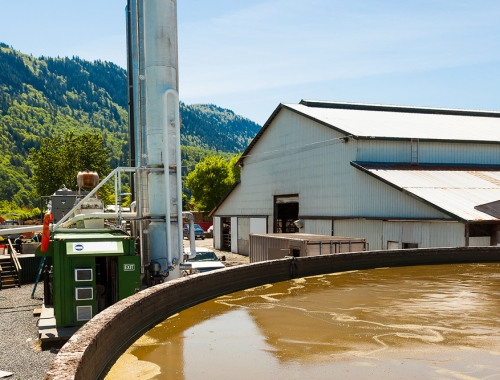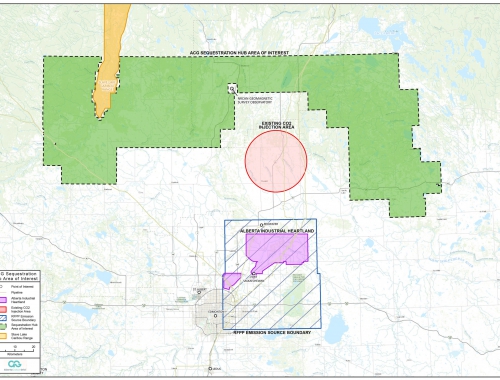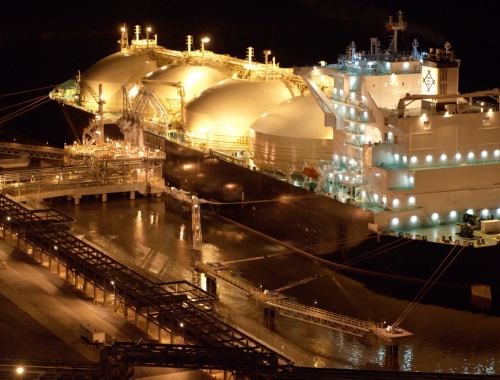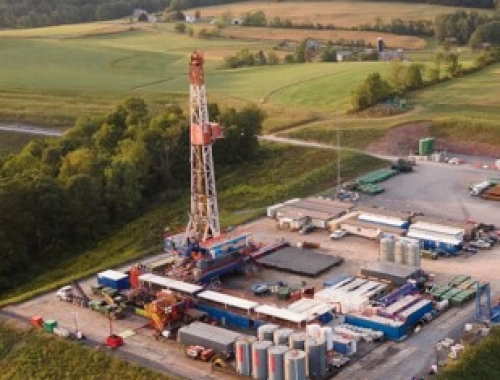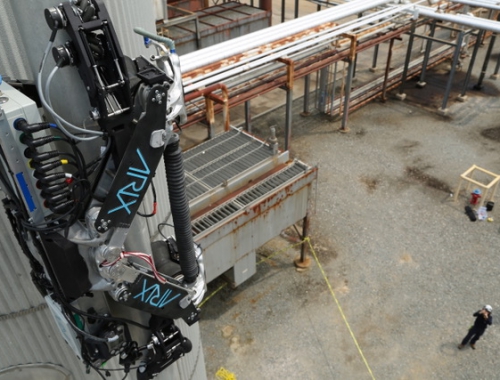Biomethane taking hold to reduce heating, transportation emissions
SUMMARY
Gas produced from decaying landfills or agricultural waste is playing a growing role in reducing emissions from heating and transportation. [Image credit: FortisBC]
By Dale LunanPOSTED IN:
Biogas produced from decaying waste in landfills or in anaerobic digesters from agricultural waste has been in use for a number of years, usually to generate on-farm or local grid electricity.
But its use as a significant energy source has been limited by a couple of factors. First, as a source of thermal electric generation, the small-scale generators have an energy conversion ratio that is much lower than the 50% associated with efficient generators. Second, in the absence of a premium price paid for the electricity generated, as was provided by Ontario’s Feed In Tariff program, the electricity was not price competitive.
Overall, biogas producers have looked for other economic opportunities for their projects. In recent years, a variety of technologies are now being used to upgrade biogas to pipeline-quality biomethane – or renewable natural gas (RNG) – that can be added to local gas distribution networks or used as transportation fuel to replace natural gas.
The US Environmental Protection Agency (EPA) says raw biogas has a methane content of between 45% and 65%, depending on the feedstock, and must go through a number of purification steps to be converted to RNG, including the removal of moisture, CO2 and trace level contaminants and reducing the nitrogen and oxygen content once upgraded, the RNG typically has a methane content of about 90%; RNG injected into local gas distribution grids has a methane content of between 96% and 98%, the EPA says.
Additionally, RNG has a low-carbon intensity as its combustion releases biogenic CO2, which does not add to the natural carbon cycle. More importantly, avoided methane emissions from natural sources and processes can be used as a source of energy.
Biogenic CO2
Ontario RNG developer Anaergia will supply about 60,000 tonnes/year of biogenic CO2 produced at its anaerobic digesters in Denmark to European Energy A/S, which will use the CO2 to produce green methanol.
And Japan’s Osaka Gas is working with IHI Corp and Petronas to study the feasibility of a methanation project that would produce e-methane using biogenic CO2 from unutilised biomass in Malaysia.
Combining biomass-gasification technology and methanation technology, the project partners aim to establish a new method to produce e-methane with lower renewable electricity cost to generate hydrogen as a reactant of e-methane, Osaka Gas said.
This project intends to produce e-methane through the methanation of syngas, which consists mainly of hydrogen, carbon monoxide and carbon dioxide (CO2), generated from biomass, such as unutilised forest resources and agricultural residues.
FortisBC, a gas and electric utility serving the Canadian province of British Columbia, has been studying the production of RNG since 2008 and has been injecting it into the North American natural gas system since 2011.
In 2022, RNG injected into natural gas distribution systems helped FortisBC and its customers avoid an estimated 208,000 tonnes of CO2-equivalent emissions. In 2022, the utility received RNG from 13 suppliers and another 20 were expected to come online in 2023 and 2024.
Others have followed, not only in North America, where upgraded biogas is referred to as RNG, but also in Europe and Asia, where it is commonly called biomethane.
Regardless of its name, RNG or biomethane is poised to grow quickly as the world seeks additional emission reduction opportunities. Research suggests the global market for RNG was about US$8.1bn in 2022 but could grow to reach US$72.1bn in the next four years.
The European Biogas Association (EBA) says biomethane can be produced for as little as €55/MWh (€15/GJ) and with “supportive policies” from the EU and member countries, as much as 34bn m3 of biomethane could be produced in Europe by 2030, covering 10% of EU demand.
“Fostering the rapid scale up of biomethane means supporting climate change mitigation, reducing dependency on external gas supplies and dealing with an unprecedented natural gas price increase,” EBA CEO Harmen Dekker has said. “A clear legislative framework will provide certainty for long-term investments on the roll out of sustainable biomethane.”
Late last year, the EBA reported that biomethane production in Europe grew by nearly 20% from 2021, even as the EU’s dependence on imported natural gas grew to 97% from 83%. About 22% of the biomethane consumed in Europe was used to heat buildings, with transportation accounting for 19%. Power generation and industry consumed 15% and 14%, respectively, the EBA said.
“With gas import dependency on the rise…sustainable biogases production in Europe is of strategic importance: each Euro invested in biogases will remain in the European economy and provide an additional value of 50% before 2030 that will also stay within our economy,” Dekker said.
Biomethane production increased to 4.2bn m3 in 2022 from 3.5bn m3, with Denmark taking a leading position in its use, where the share of biomethane in the gas grid was close to 40%. Danish aspirations call for 100% use of biomethane in the grid by 2030.
Renewable methane production
In October 2023, Colombia’s state-owned Empresas Públicas de Medellín (EPM) launched operations at what is the country's first biomethane plant.
The plant, in Itagui in the greater Medellin metropolitan area, will produce around 1,200 m3/hour of biomethane. This gas will initially be used as fuel for cooking in 40,000 homes, EPM said, transported via the company's pipelines.
French major TotalEnergies, meanwhile, is working with French biogas firm Veolia to expand the production of biomethane from Veolia’s waste and water treatment facilities in more than 15 countries.
The pair will develop and co-invest in a portfolio of international projects, with the target of producing up to 1.5 TWh (5.4 PJs) of biomethane from organic waste annually by 2025. That is enough gas to meet the needs of 500,000 people and avoid some 200,000 tonnes/year of CO2 emissions.
In Spain, Cepsa has reached an agreement with Kira Ventures to develop up to 15 biomethane plants by 2030. The first five plants are expected to be operational between 2025 and 2026.
The plants are projected to use about 10mn tonnes/year of locally sourced agricultural and livestock waste to produce biomethane and reduce CO2emissions by more than 700,000 tonnes/year.
And in Australia, energy infrastructure company Jemena RNG producer Optimal Renewable Gas (ORG) have signed a memorandum of understanding (MoU) to develop three biomethane plants in New South Wales (NSW).
ORG will identify suitable locations in regional NSW, focusing on areas with abundant agricultural and other waste sources capable of producing up to 1.5 petajoules of biomethane annually. Jemena will undertake feasibility studies and prepare the infrastructure necessary for injecting biomethane into the existing NSW gas distribution network.
Blending renewable methane in the gas grid
The most common use of RNG, whether produced in North America, Europe or Asia, is to inject it into local natural gas distribution systems, helping reduce emissions from the gas value chain.
FortisBC is a leader in this space and has been injecting RNG into its system – and others across North America – for more than a decade. RNG now accounts for about 5% of its system supply and the utility is targeting 30% of its supply to come from RNG and other low-emitting gases by 2030.
This aggressive adoption of RNG has led FortisBC to work with a number of municipalities and agricultural operations to increase the availability of RNG, not only in British Columbia but elsewhere in Canada and across North America.
Vancouver-based EverGen Infrastructure has emerged as a significant supplier of RNG to FortisBC, with several projects in BC’s Lower Mainland and another in Alberta, where its Grow-TEC facility on a farm near Lethbridge began injecting RNG into the local distribution system in the summer of 2023.

The EverGen Grow-TEC RNG facility near Lethbridge, in southern Alberta. [Image credit: EverGen Infrastructure]
It is also expanding its Pacific Coast Renewables facility (formerly Zero Waste Abbotsford) near Vancouver with the expansion of anaerobic digestion capabilities to produce biogas, which will then be upgraded into 180,000 GJ/year of RNG and injected into FortisBC’s system under a 20-year offtake agreement.
Ontario distributor Enbridge is also active in RNG developments, and in 2022 partnered with Stanton Farms to develop Ontario’s first farm-based RNG facility before earning approval from the province’s energy regulator in 2023 for a landfill RNG project in the province expected to be operational by the end of this year.
But Enbridge isn’t restricting its RNG activities to its home province. Late last year it struck a C$1.64bn (US$1.2bn) deal with Morrow Renewables to acquire seven operating landfill RNG facilities in Texas and Arkansas which will produce more than 4bn ft3/year of RNG for injection into natural gas distribution systems.
“This transaction represents a uniquely de-risked portfolio of operating and scalable RNG assets,” Enbridge CEO Greg Ebel said. “The landfill gas-to-RNG facilities…will accelerate progress toward our energy transition goals.”
Ontario’s Anaergia commissioned its Ambiente & Risorse facility in northern Italy in March 2023, and has plans to develop five more projects in Italy over the next couple of years.
The new plant converts 40,000 tonnes/year of food scraps from local landfills into 3.9mn m3/year of RNG, which is then injected into the region’s natural gas pipeline system. It also captures CO2 produced in the anaerobic digestion process and combines it with digestate to produce 9,000 tonnes/year of calcium carbonate fertiliser.
“Our Ambiente & Risorse plant will prevent the methane emissions that would occur if food waste were landfilled and instead use the waste to create a valuable…renewable fuel that displaces [higher emitting fuels] as well as fertiliser that will improve the soil in the region,” Anaergia CEO Andrew Benedek said.
Direct use of renewable methane
Alongside using RNG and biomethane to further reduce GHG emissions from the natural gas distribution sector, the direct use of RNG as a transportation fuel – on land and at sea – is growing.
The Canadian Gas Association has said that RNG used to power compressed natural gas (CNG) vehicles offers an opportunity for substantial GHG emissions reductions, including the potential for net zero performance.
And a report from the Canadian Urban Transit Research & Innovation Consortium (CUTRIC) says the use of RNG as a transit fuel offsets both tailpipe emissions and human activity-related emissions, and in certain cases can be a carbon-neutral or carbon-negative fuel.
Lowering emissions from mobility will require that humanity uses different tools and solutions to reach a low-emissions future, CUTRIC CEO Josipa Petrunic said. “Different technologies offer different types of benefits, and renewable natural gas can be one of those solutions.”
In a study funded by Enbridge, CUTRIC studied the use of RNG alongside diesel and CNG in five urban transit fleets in North America, three in Canada and two in California.
The average cost for diesel as a fuel was found to be C$1.404/km but C$1.10/km for RNG, while RNG beat diesel on every environmental metric: RNG from all sources was carbon neutral, while RNG from animal manure and food waste were both carbon negative.
The carbon intensity of RNG from landfill gas was measured at 0.9 kgCO2/km, the CUTRIC report said, less than half the carbon intensity of diesel, at 2.1 kgCO2/km.
“RNG may turn out to be an untapped source of immediate greenhouse gas emissions savings for transit agencies that are already reliant on CNG buses,” Petrunic said. “It’s time to take a more serious look at the technology as part of a spectrum of solutions.”
Indeed, RNG use as an on-road fuel grew 17% in 2022, Natural Gas Vehicles for America (NGVAmerica) says, and that year accounted for 69% of the fuel used in vehicles powered by natural gas.
California-based Clean Energy Fuels (CEF) is a pioneer in delivering CNG to the transport sector, and in recent years has moved aggressively to develop its RNG fueling infrastructure. It now operates more than 600 RNG fueling stations across North America servicing more than 25,000 RNG fueled vehicles every day.
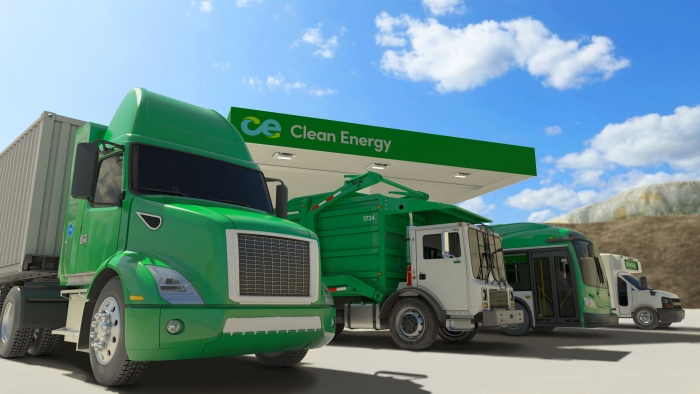
Clean Energy Fuels is a leading distributor of RNG to heavy transport markets. [Image credit: Clean Energy Fuels]
While CEF acquires most of its RNG from third-party biogas producers and RNG developers – including more than 100 dairy farms – it has recently begun developing its own network of RNG production facilities, with the first, a joint venture with French major TotalEnergies, commissioned in October 2023 at the Del Rio Dairy in Texas.
“The demand for RNG is only increasing,” said Clay Corbus, senior vice president of renewables at Clean Energy. “There is no easier or immediate way for fleets to achieve their goals to reduce emissions than transitioning their trucks, buses, or other large vehicles to RNG. Turning the challenge of managing manure at large dairies like Del Rio Dairy into something so positive like an ultra-low [emitting] fuel is a huge win for all parties.”
US major Chevron, meanwhile, has expanded a partnership with California Bioenergy LLC (CalBio) with a joint investment in a second holding company to produce and market dairy biomethane as a transportation fuel in California.
The holding company, CalBioGas Hilmar, has secured initial funding to begin developing infrastructure for biomethane projects in the California’s Merced County.
Chevron will provide funding for as many as seven digesters and one central upgrading facility across a cluster of dairy farms in Merced County, and will take 100% of the RNG produced to market as a vehicle fuel in California.
In the UK, CNF Fuels, the largest supplier of renewable biomethane for the transport sector, now operates 10 biomethane refueling stations in the UK, with seven more under construction.
“Running trucks on bio-CNG has now become ‘business as usual’ for fleet operators and CNG trucks are being adopted en masse UK-wide as fleet operators recognise bio-CNG as the most cost-effective and lowest [emission] alternative fuel to diesel available today,” CNG Fuels CEO Philip Fjeld says. “In 2022 alone, we saw dispensed volume increase by 62% compared to 2021 and we expect to surpass this growth rate in 2023.”
In Ireland, Flogas Enterprise, a commercial and industrial energy supplier, and Gas Networks Ireland, the national gas network operator, have begun construction on Ireland’s first bio-CNG refuelling station, with opening scheduled for April 2024.
The bio-CNG will be sourced from a new anaerobic digestion plant in County Cork, injected into the Gas Networks Ireland system and supplied to the station through a renewable gas certification scheme which tracks the allocation of the biomethane from the point of injection into the grid to the point of withdrawal at individual refuelling stations.
Bio-LNG
RNG can also be used in liquid form to help the heavy-duty transport and shipping sectors lower emissions.
SEA-LNG, the coalition advocating for the use of LNG as a marine fuel, has conducted a new analysis showcasing the growing availability of bio-LNG in the global bunkering market. According to a study in the summer of 2023, bio-LNG is now accessible in about 70 ports around the world, including in major hubs like Singapore, Rotterdam and along the US east coast.
“The fact that bio-LNG is commercially available now and being used as a drop-in marine fuel by operators in Europe, North America and Asia demonstrates the sustained contribution that the LNG pathway can make to [reducing emissions in] our industry,” SEA-LNG general manager Adi Aggarwal said. “Climate change is a stock and flow problem, the longer our industry waits to start using low-carbon fuels, the tougher the…challenge will be.”
Compared to marine diesel, the use of bio-LNG can lead to up to an 80% reduction in GHG emissions on a full well-to-wake basis, SEA-LNG said. And depending on the production method, bio-LNG may even achieve net-zero or net-negative GHG emissions on a lifecycle basis.
In Germany, the Westfalen Group is spearheading the adoption of CO2-neutral bio-LNG to meet the needs of mobility customers in the freight forwarding and logistics sector, it said in late 2023.
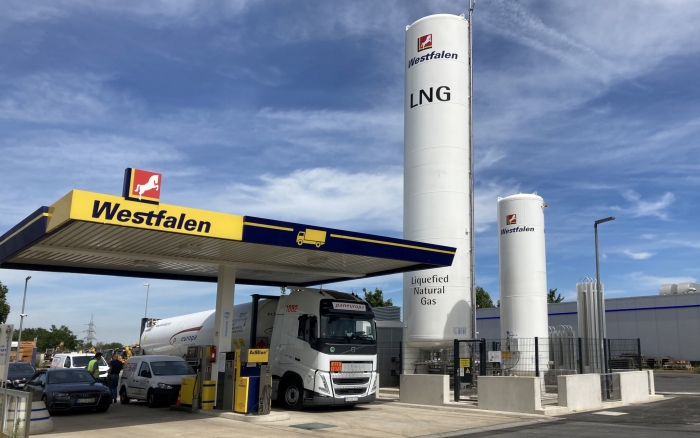
The Westfalen Group will begin marketing bio-LNG at four stations in Germany this year. [Image credit: Westfalen Group]
Beginning in 2024, bio-LNG will replace conventional natural gas at four Westphalia LNG filling stations in Munster, Herford, Herne and Cologne. All LNG vehicles can seamlessly refuel with bio-LNG, providing a practical solution for those looking to make the switch to greener energy, the company said.
“Bio-LNG allows CO2 savings of up to 100%,” said Andre Stracke, head of Mobility at Westfalen. “In addition, hardly any nitrogen oxides and fine dust are released during combustion. This makes the fuel very attractive for our customers who want to offer their freight services more sustainably.”

